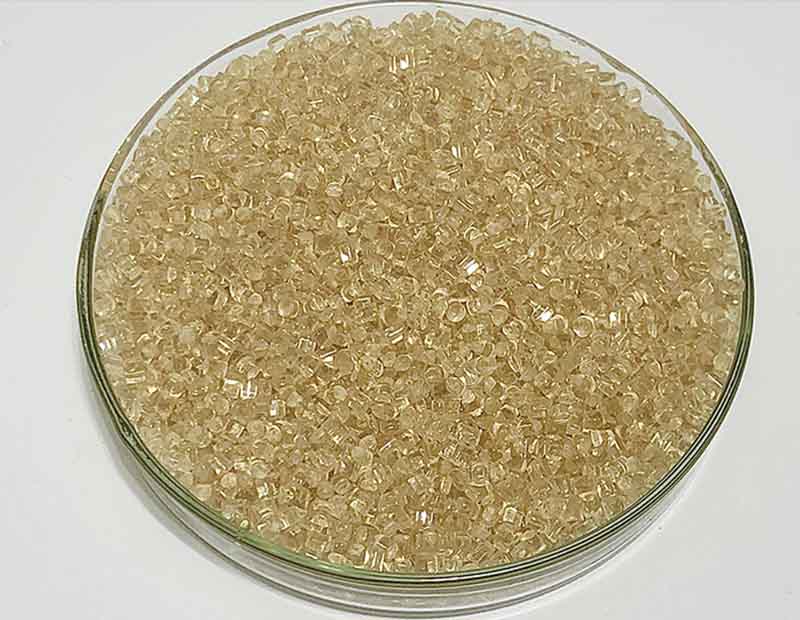PES Raw Materials refer to the base form of Polyethersulfone (PES), a high-performance engineering thermoplastic known for its exceptional heat resistance, chemical stability, and mechanical strength. PES Materials are widely used in industries where durability and high-temperature performance are critical, including medical, filtration, electronics, and aerospace applications.

1. Overview of PES Materials
PES Materials are amorphous polymers belonging to the sulfone family, similar to PSU and PPSU but offering higher temperature resistance. PES is typically transparent to light amber in color, providing excellent dimensional stability and hydrolytic resistance.
Key features of PES Raw Materials:
High continuous service temperature – up to 180°C.
Excellent chemical resistance to acids, alkalis, and detergents.
Superior hydrolytic stability – suitable for repeated steam sterilization.
Outstanding dimensional stability even in high-humidity environments.
Common PES material applications include membranes for water filtration, medical device housings, aerospace components, and food-processing equipment.
2. Physical and Chemical Properties of PES Raw Materials
The PES raw materials properties combine high thermal performance with robust mechanical and electrical characteristics:
| Property | Typical Value |
|---|---|
| Glass Transition Temperature (Tg) | ~225°C |
| Continuous Service Temperature | 180°C |
| Tensile Strength | 90–100 MPa |
| Water Absorption (24h) | <0.4%<> |
| Chemical Resistance | Excellent against acids/alkalis |
Chemical resistance of PES materials makes them ideal for filtration and medical environments where aggressive cleaning agents are used. PES resists hydrolysis, ensuring long-term stability in hot water and steam.
3. PES Raw Materials Manufacturing Process
The PES manufacturing process involves several steps to ensure purity and performance:
Polymerization Reaction – PES is synthesized via condensation polymerization of bisphenol S (BPS) and dichlorodiphenyl sulfone under alkaline conditions.
Purification – removing residual solvents and unreacted monomers.
Pelletizing – converting into uniform granules for processing.
Quality Testing – verifying thermal, mechanical, and chemical resistance properties.
Processing PES materials typically includes injection molding, extrusion, and thermoforming. As with other sulfone polymers, pre-drying before processing is crucial to prevent defects caused by moisture.
4. PES vs PSU vs PPSU: High-Performance Plastics Comparison
| Property | PES | PSU | PPSU |
|---|---|---|---|
| Max Continuous Use Temp | 180°C | 170°C | 180°C |
| Transparency | Transparent/Amber | Transparent/Amber | Transparent/Amber |
| Impact Resistance | Good | Good | Excellent |
| Chemical Resistance | Excellent | Good | Excellent |
| Cost | Higher than PSU | Moderate | Higher than PSU |
PES vs PSU: PES has a higher glass transition temperature and better thermal stability than PSU.
PES vs PPSU: PPSU offers better impact strength, but PES provides superior dimensional stability at high temperatures.
For engineers comparing PES vs PSU vs PPSU, PES is often chosen when thermal stability and chemical resistance are top priorities.
5. Sustainability and PES Plastic Recycling
With growing environmental awareness, PES raw materials are being evaluated for sustainability and recyclability:
Durable performance reduces waste by extending product life.
PES plastic recycling process allows for reprocessing clean, uncontaminated scrap.
Chemical recycling research aims to recover monomers from PES waste for reuse in new materials.
Manufacturers are also adopting greener PES manufacturing processes by minimizing solvent usage and improving energy efficiency.
PES Raw Materials are a versatile and reliable choice for industries requiring heat resistance, chemical durability, and long-term performance. Whether used in filtration membranes, medical devices, or aerospace components, PES materials deliver exceptional results. With advancements in recycling and sustainable production, PES is positioned to remain a leading high-performance plastic for the future.






